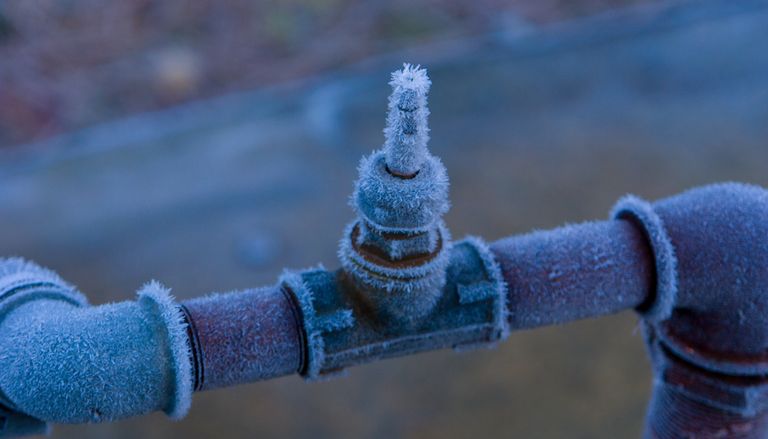Everybody has their own unique thinking on the subject of Prevent Frozen Pipes .

Winter can ruin your pipes, specifically by freezing pipelines. Below's just how to prevent it from occurring and what to do if it does.
Intro
As temperature levels drop, the threat of icy pipes rises, potentially bring about expensive fixings and water damage. Recognizing just how to stop icy pipelines is essential for home owners in cool climates.
Recognizing Frozen Pipes
What triggers pipes to freeze?
Pipelines freeze when revealed to temperatures below 32 ° F (0 ° C) for extended periods. As water inside the pipelines ices up, it expands, taxing the pipeline walls and potentially causing them to break.
Dangers and damages
Icy pipelines can lead to water disturbances, residential property damage, and pricey repairs. Ruptured pipes can flood homes and create extensive architectural damages.
Indications of Frozen Pipeline
Identifying icy pipelines early can stop them from breaking.
Just how to identify icy pipes
Seek reduced water flow from faucets, uncommon odors or sounds from pipelines, and noticeable frost on revealed pipes.
Avoidance Tips
Shielding prone pipes
Cover pipelines in insulation sleeves or utilize heat tape to shield them from freezing temperatures. Focus on pipelines in unheated or outside locations of the home.
Heating methods
Keep interior rooms effectively heated up, specifically areas with plumbing. Open up cupboard doors to allow cozy air to flow around pipes under sinks.
Securing Outside Plumbing
Yard hoses and outdoor faucets
Disconnect and drain pipes garden hoses prior to winter. Mount frost-proof spigots or cover outside faucets with protected caps.
What to Do If Your Pipes Freeze
Immediate activities to take
If you suspect icy pipes, keep faucets available to relieve pressure as the ice thaws. Use a hairdryer or towels soaked in hot water to thaw pipelines gradually.
Long-Term Solutions
Architectural changes
Take into consideration rerouting pipes away from outside wall surfaces or unheated areas. Include extra insulation to attic rooms, basements, and crawl spaces.
Upgrading insulation
Purchase premium insulation for pipes, attic rooms, and walls. Appropriate insulation helps keep constant temperature levels and decreases the danger of frozen pipelines.
Conclusion
Stopping icy pipes needs proactive steps and quick responses. By understanding the causes, signs, and preventive measures, homeowners can protect their pipes throughout winter.
5 Ways to Prevent Frozen Pipes
Drain Outdoor Faucets and Disconnect Hoses
First, close the shut-off valve that controls the flow of water in the pipe to your outdoor faucet. Then, head outside to disconnect and drain your hose and open the outdoor faucet to allow the water to completely drain out of the line. Turn off the faucet when done. Finally, head back to the shut-off valve and drain the remaining water inside the pipe into a bucket or container. Additionally, if you have a home irrigation system, you should consider hiring an expert to clear the system of water each year.
Insulate Pipes
One of the best and most cost-effective methods for preventing frozen water pipes is to wrap your pipes with insulation. This is especially important for areas in your home that aren’t exposed to heat, such as an attic. We suggest using foam sleeves, which can typically be found at your local hardware store.
Keep Heat Running at 65
Your pipes are located inside your walls, and the temperature there is much colder than the rest of the house. To prevent your pipes from freezing, The Insurance Information Institute suggests that you keep your home heated to at least 65 degrees, even when traveling. You may want to invest in smart devices that can keep an eye on the temperature in your home while you’re away.
Leave Water Dripping
Moving water — even a small trickle — can prevent ice from forming inside your pipes. When freezing temps are imminent, start a drip of water from all faucets that serve exposed pipes. Leaving a few faucets running will also help relieve pressure inside the pipes and help prevent a rupture if the water inside freezes.
Open Cupboard Doors
Warm your kitchen and bathroom pipes by opening cupboards and vanities. You should also leave your interior doors ajar to help warm air circulate evenly throughout your home.

Hopefully you enjoyed reading our post about Winter Plumbing Precautions: Preventing Frozen Pipes. Thanks a ton for taking a few minutes to browse our posting. Loved our blog? Please quickly share it. Help somebody else check it out. Many thanks for your time. Kindly come by our website back soon.
Call Today